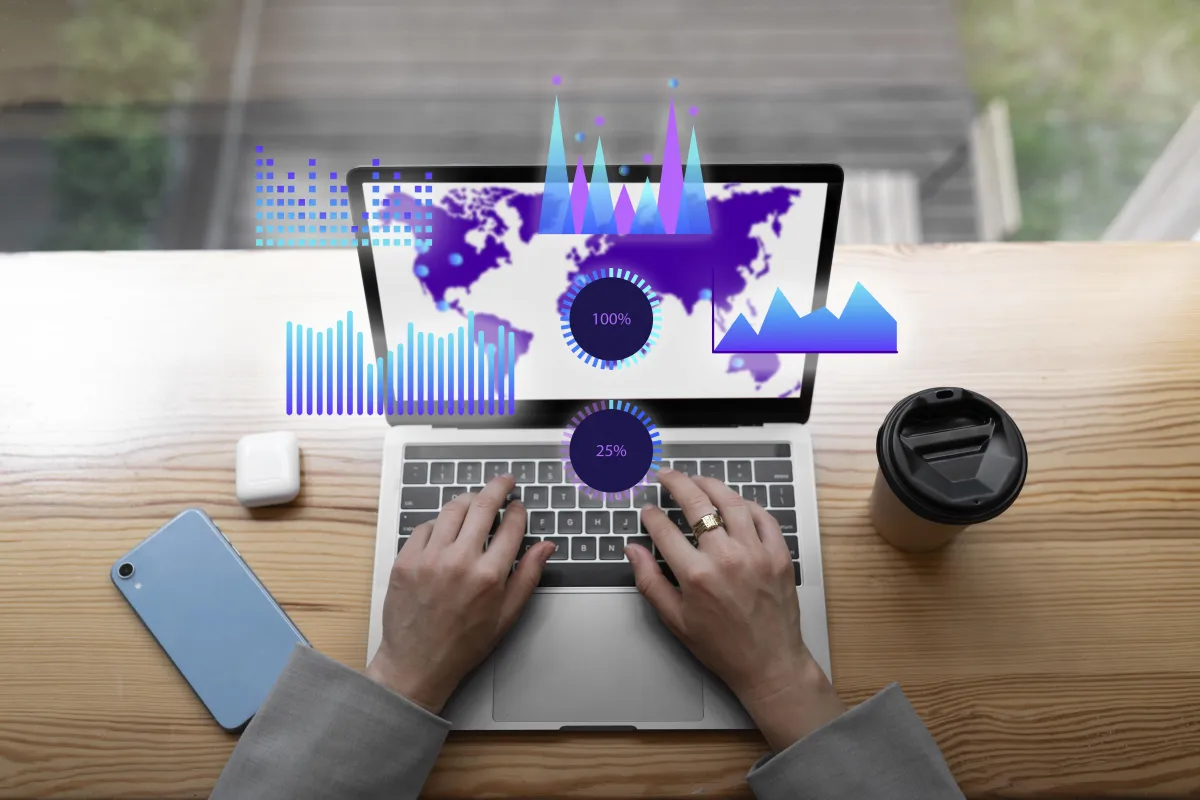Our Blog
Insights That Drive Smarter Decisions
Stay ahead with expert articles, industry updates, and practical strategies from the ByteLock Solutions team.

Let AI Help: Augmented Analytics and the Future of Insight
AI isn’t going to replace your analysts. But it can turbocharge them—and everyone else—to discover insights faster, ask smarter questions, and focus attention on what matters.
What is Augmented Analytics
Augmented analytics refers to the use of AI, machine learning (including natural language processing), and automation to enhance the analytics process. Tasks like data prep, insight generation, pattern detection, anomaly detection, recommending visuals—all become easier, more accessible.
It shifts traditional BI from being mostly descriptive into more diagnostic, predictive, and prescriptive, with less manual toil.
Why It’s a Big Deal
Empowers non-technical users: people who don’t know SQL, Python, or complex models can still ask natural language questions and get back insights.
Shortens time to insight: automated suggestions, anomaly detection, trend detection—all help discover value faster.
Helps surface insights you might otherwise miss: AI can find patterns or correlations in large, messy data that human eyes/analysts might overlook.
Frees analysts/data engineers to focus on higher value work—strategy, interpreting results, aligning insights with business goals—rather than repetitive cleaning or basic reporting.
Challenges & Things to Watch
Garbage in, garbage out: insights are only as good as the data feeding them. If data quality or structure is weak, augmented analytics can mislead.
Interpretability & trust: users might mistrust or misinterpret AI-generated suggestions if they don’t understand how they were derived. Transparency is key.
Bias & fairness: models might pick up biases in data; need monitoring and fairness checks.
Over-automation risk: relying too heavily on automated insights could lead to missed context or domain-specific nuance.
How to Incorporate Augmented Analytics in Your Business
Choose tools that integrate smoothly with your existing data pipelines and dashboards.
Start small: identify use cases where automated anomaly detection, trend detection or suggestions would add obvious value (e.g. sales dips, cost over-runs, customer churn).
Educate users: train them to ask good questions, understand what the suggestions mean, and validate them.
Build trust: show examples of successes, but also expose limitations. Encourage feedback & iteration.
Ensure your data governance and quality practices are strong—since augmented analytics rests on a foundation of reliable data.
Trends & What’s Coming Next
Natural language queries / conversational analytics will continue improving. Less need to know technical syntax.
Automated insight recommendation: systems that highlight surprises, anomalies, or opportunities without being asked.
More embedded analytics in everyday tools (slack, CRM, ERP) so insights pop up in workflow rather than requiring people to go hunt them.
Stronger integration of augmented analytics with governance, privacy, and ethical oversight (so AI-driven insights are responsible).
AI-powered augmented analytics is not about replacing human intelligence—it’s about amplifying it. It helps your team move faster, spot what matters, and make better decisions with less friction. Bytelock Solutions helps you pick the right augmented analytics tools, set them up securely, and build workflows so your insights are not just powerful but trusted and actionable.

MENU
CUSTOMER CARE
LEGAL
FOLLOW US
Copyright ©2025. BYTELOCK SOLUTIONS. All Rights Reserved.
